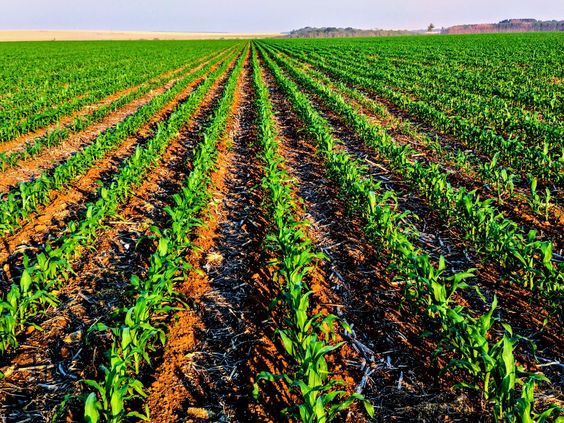Cultivating the Future: Monitoring Regenerative Agriculture Practices with Smart Technology
Regenerative Agriculture Practices sector is at a crossroads. Traditional farming methods, while productive, can have a significant impact on the environment. Regenerative agriculture offers a promising alternative, focusing on improving soil health, biodiversity, and overall ecosystem function. However, measuring the success of these practices can be challenging. This is where smart agriculture steps in, providing innovative tools for monitoring regenerative agriculture practices.
Contents
Introduction to Regenerative Agriculture
Regenerative agriculture is a holistic approach to farming that prioritizes long-term sustainability. It aims to improve soil health, increase biodiversity, and enhance ecosystem services. This is achieved through a set of core principles, including:
- Minimizing soil disturbance: Practices like no-till farming and cover cropping help to preserve soil structure and microbial life.
- Increasing crop diversity: Planting a variety of crops together promotes beneficial interactions and reduces pest and disease pressure.
- Keeping the soil covered: Mulch or cover crops help to retain moisture, suppress weeds, and regulate soil temperature.
- Integrating livestock: Integrating animals into the farming system helps to improve soil fertility through manure application and grazing practices.
The Challenge of Monitoring Regenerative Practices
The benefits of regenerative agriculture are well-documented, but measuring their impact can be complex. Traditional methods often rely on physical soil sampling and visual assessments, which can be time-consuming and subjective. Additionally, it can be difficult to isolate the effects of regenerative practices from other factors like weather or pest outbreaks.
Smart Agriculture to the Rescue
Smart agriculture, also known as precision agriculture, utilizes technology to collect and analyze data on various agricultural parameters. This data can then be used to optimize farming practices, improve efficiency, and ultimately, measure the impact of regenerative approaches. Here are some of the key technologies used in monitoring regenerative agriculture:
- Remote sensing & Satellite imagery: Satellites can be used to track changes in crop health, soil moisture, and vegetation cover over time. This provides valuable insights into the effectiveness of regenerative practices in improving soil health and plant growth.
- Soil sensors: Sensors placed in the soil can continuously monitor factors like temperature, moisture, and nutrient levels. This real-time data can help farmers adjust irrigation practices and fertilizer application to optimize soil health.
- Drone technology: Drones equipped with high-resolution cameras and specialized sensors can be used to capture detailed images of fields. This data can be used to assess crop health, identify pest outbreaks, and map soil conditions.
- Big data analytics: The vast amount of data collected through smart agriculture tools can be analyzed using big data techniques. This allows farmers to identify trends, predict outcomes, and make data-driven decisions to optimize their regenerative practices.
Benefits of Monitoring Regenerative Agriculture
There are several key benefits to monitoring regenerative agriculture practices using smart technology:
- Improved decision-making: Real-time data allows farmers to make informed decisions about their management practices, leading to more efficient use of resources and improved farm productivity.
- Verification of regenerative practices: Data collected through smart agriculture tools can be used to verify the implementation of regenerative practices, which is becoming increasingly important for certification and market access.
- Quantifying environmental benefits: By monitoring soil health, carbon sequestration, and water infiltration, farmers can quantify the environmental benefits of their regenerative practices and demonstrate their positive impact on the environment.
- Enhanced communication Regenerative Agriculture Practices: Data collected through smart agriculture tools can be used to communicate the benefits of regenerative agriculture to stakeholders, including consumers, policymakers, and the broader agricultural community.
Challenges and Considerations
While smart agriculture offers tremendous potential for monitoring regenerative agriculture, there are also some challenges to consider:
- Cost of technology Regenerative Agriculture Practices: The initial cost of implementing smart agriculture technologies can be a barrier for some farmers. However, as the technology matures, the cost is expected to decrease.
- Data management: The large amount of data generated through smart agriculture tools needs to be properly managed and analyzed to be useful. Farmers may need training and support to effectively utilize this data.
- Connectivity Regenerative Agriculture Practices: Utilizing some smart agriculture technologies, such as remote sensing or drone technology, may require reliable internet connectivity which can be a limitation in rural areas.
- Cybersecurity: As agriculture becomes increasingly reliant on technology, the issue of cybersecurity becomes more important. Farmers need to be aware of potential risks and take appropriate steps to protect their data.
Conclusion: A Sustainable Future Regenerative Agriculture Practices
Regenerative Agriculture Practices has the potential to transform the agricultural sector by promoting environmental health, economic viability, and social responsibility. Monitoring these practices using smart agriculture technologies is crucial for measuring their success and widespread adoption. By embracing innovation and collaboration, farmers, researchers, and technology companies can work together to develop and implement cost-effective, user-friendly tools to empower farmers and cultivate a more sustainable future for agriculture.




